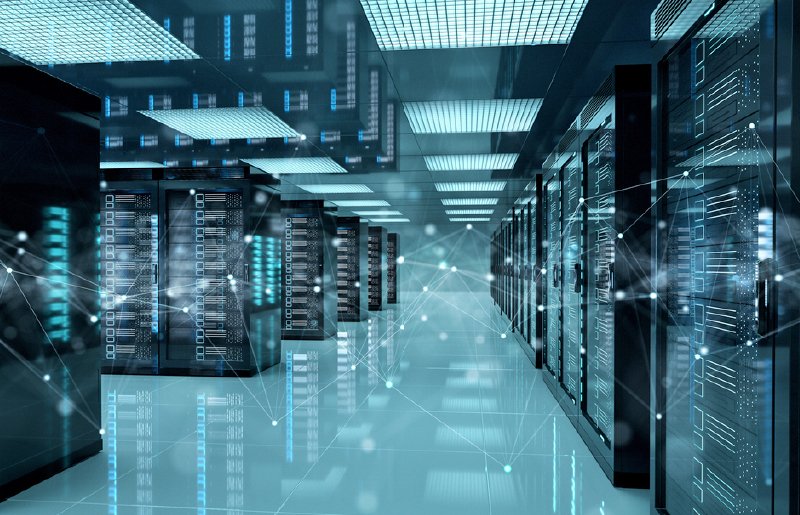In today’s fast-paced digital world, the term “server” is thrown around quite a bit. But what exactly is a server? Is it just a fancy computer, or does it hold a more vital role in the tech ecosystem? If you’ve ever wondered what powers your favorite websites, apps, and even your cloud storage, you’ve got servers to thank. Let’s dive into the nitty-gritty of what a server really is, how it works, and why it’s crucial for businesses and individuals alike.
What is a Server?
At its core, a server is a specialized computer designed to manage, store, and share resources with other devices—often referred to as clients. These resources can be anything from data, applications, or even other hardware like printers. Servers act as the backbone of networks, providing the power behind everything from websites to internal business applications. Without them, the internet as we know it wouldn’t exist.
Unlike regular desktop computers, a server is optimized to handle multiple requests from various clients all at once. Think of a server as the hub in a busy network, where data is distributed quickly and efficiently to those who need it.
How Do Servers Work?
So, how does this powerful piece of technology work its magic? It all boils down to one simple principle: communication. Servers operate by receiving requests from clients and responding with the appropriate data or service. For example, when you visit a website, your browser sends a request to a web server, which then responds by sending back the website’s content. This seamless process happens in milliseconds, making it feel instantaneous to the user.
Servers work tirelessly in the background, handling multiple requests at once, ensuring smooth and reliable data transfer across networks. Whether you’re streaming videos, working on cloud-based software, or playing an online game, you’re interacting with a server.
Desktop Computers vs. Servers: What’s the Difference?
At first glance, you might think a server and a desktop computer are one and the same. Both have processors, memory, and storage, right? While that’s technically true, there are significant differences in how they’re built and what they’re meant to do.
Servers are designed for high efficiency and reliability. They can operate 24/7 without crashing, whereas desktop computers are built for personal use, handling less workload. Servers often have robust cooling systems, redundant power supplies, and specialized hardware to ensure they stay up and running, even in the event of hardware failure. In contrast, your home computer might need a reboot every now and then.
To put it simply: if a desktop is a race car, then a server is a heavy-duty truck designed to carry massive loads over long distances.

Types of Servers
Just like there are different kinds of tools for different jobs, there are various types of servers, each serving a specific function. Let’s break down some of the most common types you’re likely to encounter:
- Web Servers
These are responsible for hosting websites. Whenever you type a web address into your browser, a web server processes the request and delivers the web pages. - File Servers
If you’ve ever worked in an office and stored documents on a shared network drive, you’ve used a file server. These servers manage and store files, allowing multiple users to access and share them. - Database Servers
Think of these as the digital librarians of the server world. Database servers manage data for other computers, storing everything from customer records to product catalogs. - Mail Servers
Every time you send or receive an email, a mail server is at work. These servers manage the flow of emails between clients. - Game Servers
For online gaming enthusiasts, game servers are what allow players around the world to connect and play in real time. - Cloud Servers
With cloud computing becoming more popular, cloud servers are now responsible for hosting applications and storing data remotely, accessible from anywhere with an internet connection.
Key Components of a Server
Servers, though specialized, share some fundamental hardware components with desktop computers. However, each of these components is designed to handle greater loads and provide more reliability. Here’s what’s under the hood of a typical server:
- Central Processing Unit (CPU):
Servers usually have more powerful CPUs compared to desktops. In some cases, they have multiple processors to handle large volumes of data simultaneously. - Random Access Memory (RAM):
The more RAM a server has, the faster it can process requests. Servers typically have much larger amounts of RAM than personal computers to ensure they can handle heavy workloads. - Storage (Hard Drive or SSD):
Storage is where a server keeps all its data. For large-scale operations, servers use enterprise-level storage solutions with redundancy, meaning there are backups in place in case of failure. - Network Interface:
Since servers need to be constantly connected to a network, they come with multiple network interfaces to ensure a fast and reliable connection. - Power Supply:
A server usually has redundant power supplies to ensure that even if one fails, the server stays online.
Choosing the Right Server
Picking the right server for your needs depends on several factors. Are you hosting a website? Managing a company’s email system? Storing massive amounts of data? Each use case requires a different type of server setup.
For businesses, it’s crucial to assess their growth potential. A small business may only need a simple file or mail server at first, but as the company grows, they may require more powerful database or web servers to handle increased traffic and data.
It’s also essential to consider security and backup options. Servers hold critical data, so investing in a reliable solution with strong security protocols is non-negotiable.
Servers in Everyday Life
You may not realize it, but servers play a role in almost every aspect of our digital lives. When you post a picture on social media, a server stores it. When you watch your favorite TV series on a streaming platform, a server delivers that video to your device. Even when you send a text message, it’s a server that helps deliver it almost instantaneously.
Without servers, the vast majority of modern technology wouldn’t function. They’re the silent workers that keep everything connected, storing our data, running applications, and enabling communication on a global scale.
Server Maintenance: Keeping Things Running Smoothly
Just like any piece of equipment, servers need regular maintenance to ensure they’re running at optimal performance. This includes tasks like software updates, hardware checks, and security monitoring.
Regular backups are another essential aspect of server maintenance. In case of data corruption or hardware failure, having recent backups can save businesses from catastrophic data loss.
Monitoring the server’s performance is also critical. Over time, as more data is processed and stored, a server can slow down. Keeping an eye on system resources like CPU, RAM, and storage usage can help prevent bottlenecks before they become problems.
Read More: The Research Gap: How to Identify and Address It for Groundbreaking Studies
Conclusion
In summary, servers are the unsung heroes of our digital age. They power websites, manage data, and keep businesses and individuals connected. From small file servers in local offices to massive cloud servers that host applications for millions of users, servers are the backbone of the modern world.
Choosing the right server for your needs is crucial, whether you’re a small business or a global enterprise. Understanding the different types of servers and their components can help you make the best decision for your network needs. So, next time you load a webpage or store a file in the cloud, you’ll know exactly what’s working behind the scenes to make it happen.







